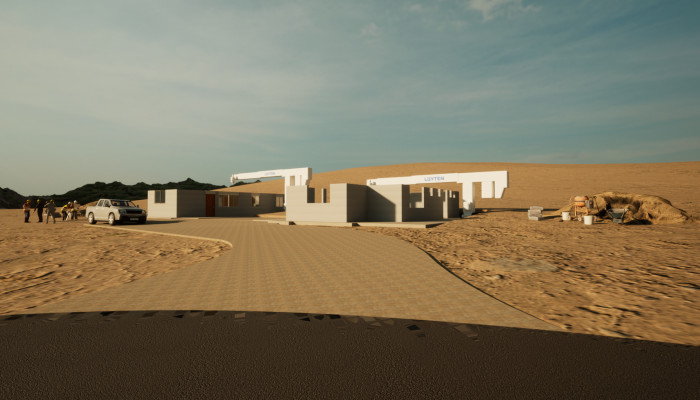
Around a third of housing in Australia’s outback and remote areas could potentially be built using 3D printing technology by 2030, an expert from construction company Luyten predicts.
Luyten CEO Ahmed Mahil said 3D printing in the home building sector is already underway in Australia as it already has been in many parts of the world.
“While Australia has not yet put in place targets, we are moving quickly to foster a robust and cutting-edge 3D printing industry that will help to solve the housing affordability crisis and also assist our nation to build housing and other building structures in remote areas that are impervious to challenging environmental conditions,” he said.
Mr Mahil said it is “very clear” that 3D printing is not a trend and has been maturing for 30 years now across different sectors.
One of the recent developments utilising the 3D printing technology is Luyten’s indigenous housing project in Alice Springs in the Northern Territory.
Mr Mahil said 3D printing is a good strategy for building homes in the red centre, considering its harsh temperatures that could dip to -5 degrees Celsius in winter and hit close to 50 degrees Celsius in summer.
“The land is extremely arid and not ideal for conventional housing — not only is it difficult to get traditional construction materials out there, but the cost is also prohibitive,” he said.
“Our technology and proprietary Utimatecrete is ideal for building houses in these types of challenging conditions. 3D printing for building and construction involves minimal disruption to the build site which is ideal for sustainability.”
This is just one way the 3D printing technology can revolutionise the sector. It can also reduce the time it takes for construction to finish, from months or years to just several days.
In fact, Luyten was able to build a three-bedroom home in as little as three days: the process involves printing structural elements in two days and assembling the components on the third day.
Furthermore, 3D concrete printing reduces 60% of construction waste, 70% of production time, and 80% of labour costs when comparing hands-on construction projects.
“The technology is proven to increase construction site efficiency with 60% guaranteed costs savings, 300 to 500 times shorter execution times, and an 80% total reduction in monetary expenses without formwork in concrete construction,” Mr Mahil said.
Another upside on sustainability is how 3D printing can reduce emissions from the construction industry.
Mr Mahil said the printing technology employs up to 40% less carbon dioxide emissions by reducing the use of cement in property mixes. The robotic system and logistics also cut carbon footprint in the construction site by 50% to 70%.
“With these types of numbers, it is hard to dispute why more and more people, governments and businesses will choose 3D printed houses and buildings over traditional building methods,” he said.
Is the 3D printing technology safe? Mr Mahil said Luyten’s 3D-printed house are compliant to the Australian and New Zealand building code.
Luyten’s Ultimatecrete 3D printable results in in 82.5 MPa compressive strength after 28 days, four times stronger than the 20 MPa residential building code requires.
“It won’t be long before you start to see the build of 3D printed homes in suburban areas around the country as well. Why pay a builder $800,000 for a new home, when a 3D printed home only costs a fraction of this,” Mr Mahil said.
3D printing in construction — a global context
The United Arab Emirates was the first country globally to promote 3D printing in the construction industry in 2016. It set a 25% target for the industry by 2030.
Meanwhile, Malawi’s commitment to 3D printing resulted in a tenfold decrease in construction waste and a 70% reduction in carbon emissions. The technology also presented opportunities to solve the rural housing deficit in Malawi.
Over to the United States, President Joe Biden launched the America Makes Forward program, which promotes additive manufacturing. This program will provide opportunities for governments and multinational businesses to support 3D printing initiatives.
“Countries across the world are already mandating 3D printing targets for the building and construction industry,” Mr Mahil said.
—
Photo and video provided by Luyten.